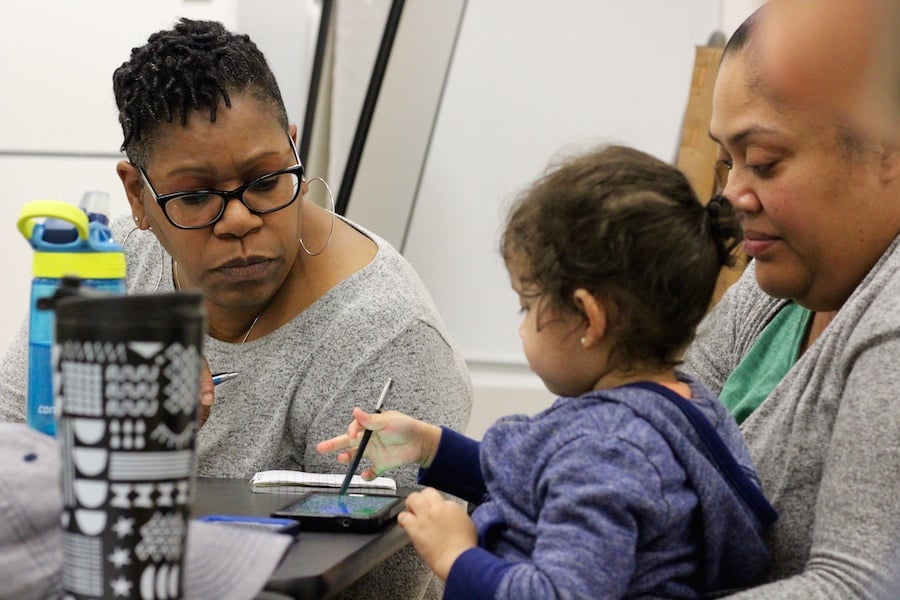
Culture & Community | Goffe Street Armory | Architecture | Arts & Culture | New Haven | Whalley/Edgewood/Beaver Hills
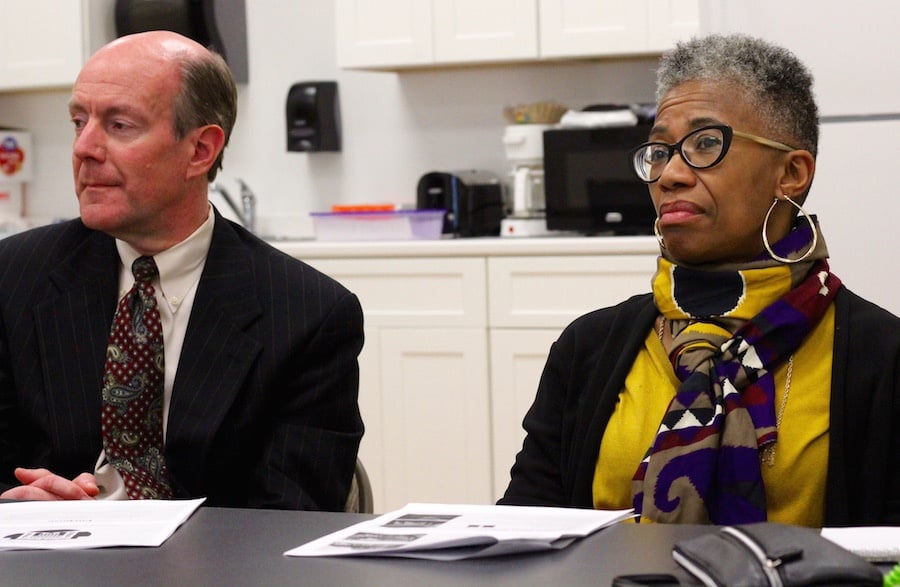 Ife Michelle Gardin and Steve Fontana. Lucy Gellman Photos.
Ife Michelle Gardin and Steve Fontana. Lucy Gellman Photos.
First it was a group of community members rallying to save a historic building. Then it was a class of New Haven Academy and Yale students, scrambling to make sense of decades of architectural history.
Now the two of them are working together to hatch a plan that will restore the Goffe Street Armory—and find the funds to pay for it—in the midst of a state budget crisis.
That’s the story for the newly-forged Armory Community Advisory Committee (ACAC), a group of born-and-bred New Haveners, two Yale graduate students, and one Yale Professor that is trying to pave the road to the Goffe Street Armory’s rebirth. Wednesday night, they gathered for their second meeting at the Whalley Avenue police substation.
 Between comments, committee members like Nadine Horton kept an eye on the youngest member of their group, Olivia Peralta.
Between comments, committee members like Nadine Horton kept an eye on the youngest member of their group, Olivia Peralta.
It was a small group: WEB Community Management Team Chair Nadine Horton and Co-chair Chris Peralta, his partner Alex Taylor-Mendez and daughter Olivia, Artspace New Haven Director Helen Kauder, Deputy Director of Economic Development Steve Fontana, arts guru Ife Gardin, Yale professor Elihu Rubin and two graduate students who are working with him, Fran Xavier and Kathryn Arffa.
Xavier is a third year at the Yale School of Architecture and Arffa is a second year at the Yale School of Management.
The push comes in the wake of Rubin’s project, Excavating The Armory, during City-Wide Open Studios (CWOS) last year. During those sessions, students reimagined uses for the building, and then combined them with ideas from community members during “Armory Weekend” in October. Shortly after that weekend, CWOS incubator Artspace New Haven received word that it would not be able to use the armory in 2018 because it is not structurally sound.
Already, the city has set aside $250,000 in bond funds to begin attacking the problem of the armory’s deteriorating roof. Now, Rubin said, “We need to push the city … it seems like a good time to at least get them to stabilize the building.”
“I think we do sort of see this as a family affair,” he said. “We’re all kind of in this together and learning from each other about the armory, and what we can try to do to try to preserve it as a vital civic resource.”
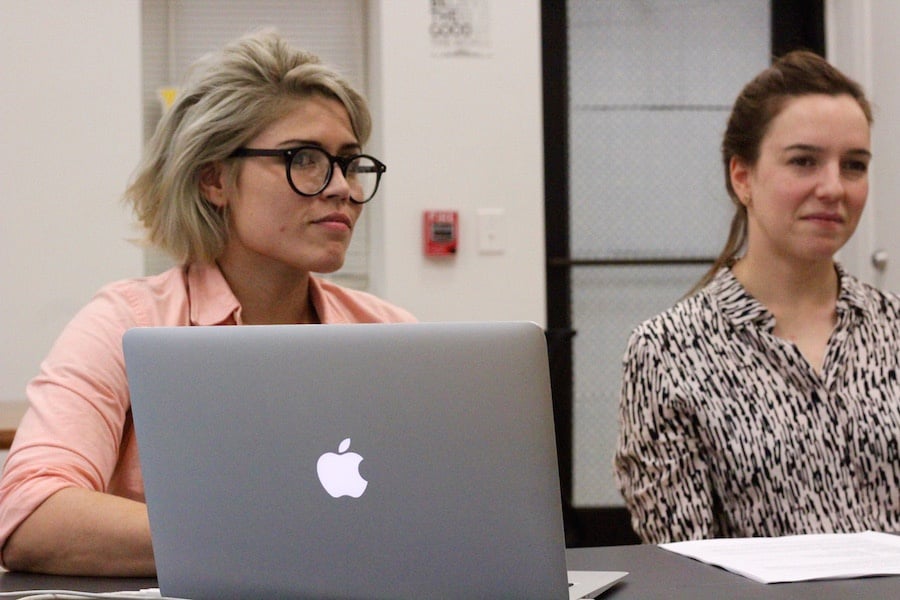 Xavier and Arffa. At one point, Xavier said that she thought "this is the most involved the community's ever been." Kauder and Nelson disagreed, noting a 2012 meeting at James Hillhouse High School for which the WEB community came out in the dozens.
Xavier and Arffa. At one point, Xavier said that she thought "this is the most involved the community's ever been." Kauder and Nelson disagreed, noting a 2012 meeting at James Hillhouse High School for which the WEB community came out in the dozens.
On Wednesday, that family sat on opposite sides of a table: Yale and not Yale, with Horton, Gardin, and Fontana like a bridge in between. Kicking off the conversation, Xavier and Arffa ran through several precedent studies, looking at the uses, funding sources, and ownership of rehabilitated armory buildings nearby.
Of particular interest: the Ansonia Armory, which is owned by the city but has partnered with a private parochial school, and undergone a $500,000 renovation. In the past years, the building has become known for opening its drill hall to walking tours for senior citizens.
It’s a great deal smaller than the Goffe Street building, said Rubin—30,000 square feet versus New Haven’s 160,000—but it could serve as a recreational model for New Haveners, starting with the drill hall before rehabbing the building in phases.
“I’m very struck by the indoor activity for the elderly,” said Kauder. “The idea of wellness, well-being—I just love the idea that during the winter months, people are walking. Our Armory is much bigger [than Ansonia’s] … if you go around like three times, you have a mile.”
“There are so many elders in the community that could benefit from this,” chimed in Gardin. “So many.”
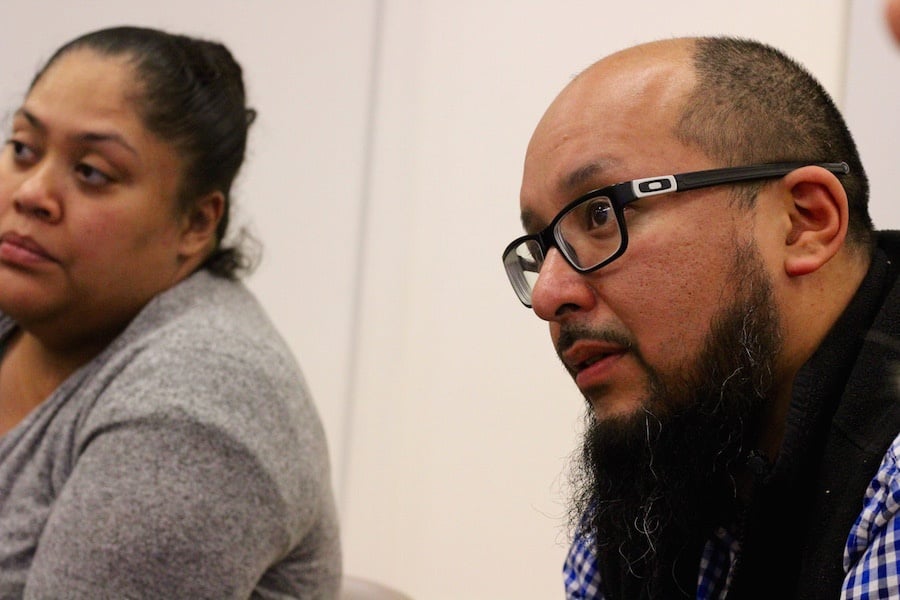 Chris Peralta (Alex Taylor-Mendez is in the backgroud).
Chris Peralta (Alex Taylor-Mendez is in the backgroud).
Xavier said that aspect—and a natural link to recreation at neighboring De Gale field—is part of her hope for the building as well. “We think about the drill hall as sort of the center, something that we can really use for the community, an extension to that park,” she said. “In the winter, a sort of second park.”
There’s also the Cranston Street Armory, a 165,000 square foot building in the West Bedford neighborhood of Providence that Rubin called “our cousins” in terms of a rehab.
Owned by the State of Rhode Island, the Armory has been in a swing state since 2016, when a feasibility assessment by a Providence real estate firm estimated that a rehab would cost $100 million (the estimate for demolition at that time was $5.5 million).
Most recently, the West Broadway Neighborhood Association developed an “Armory Advocacy” subcommittee that has asked for a proposal to reuse the building space. Last summer, the committee partnered with the state to give tours of the building during the city's annual PVDFest celebration.
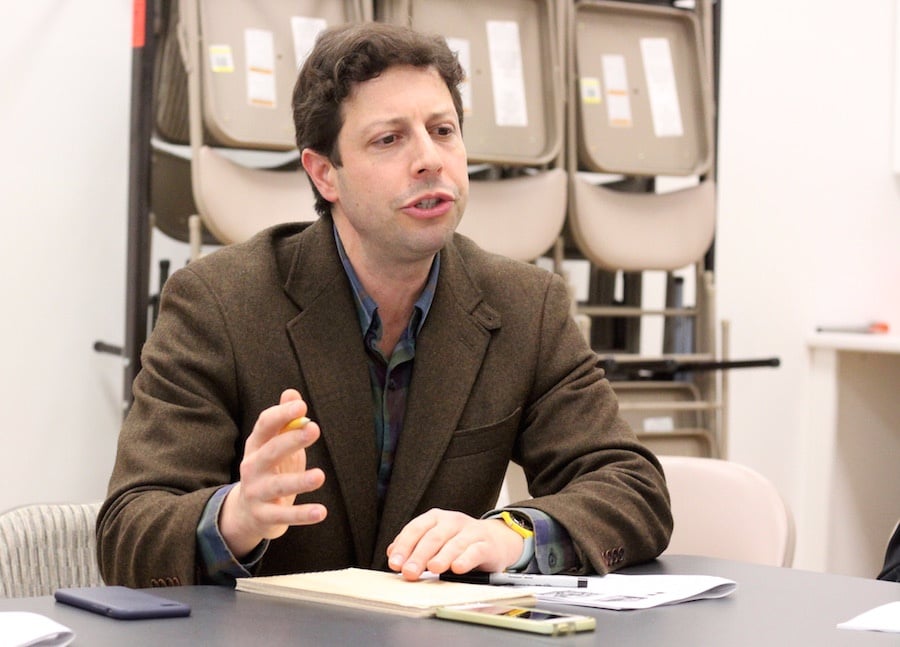
“Providence and New Haven have a lot in common,” he said. “I think that we should be friends with the people trying to do the Cranston Street Armory, trying to learn from each other. I think that we should be allies with them, because they are in a similar situation to us in many ways.”
“It might be kind of fun and interesting to plan a sort of exchange with them,” he added.
As it stands, Xavier and Arffa said, the ACAC is planning to “push the city” on the project, and consider potential sources of funding and community partners. In addition ACAC members have been debating whether to apply for the National Register of Historic Places (the Armory is already on the state historic register), a process that costs nothing to apply, but adds additional regulations to any restoration work that takes place.
As of this month, the city has paid for at least two code assessments of the building, one through Svigals and Partners in 2009-2010 and another through Newman Architects this year. Reached by phone Thursday afternoon, City Engineer Giovanni Zinn said that he is looking forward to thinking about “what is the universe of possibilities for the Armory.”
Zinn added that the city plans to forge ahead with roof repairs, for which the $250,000 in bond funds is reserved, in the spring of this year. He said he expects those repairs to be done before late fall.
ACAC members Xavier, Arffa, Rubin and Horton said they want more than that. They’re looking for enough capital to help them rehab the building in stages, starting with the drill hall and working out. While New Haven’s Economic Development Administrator Matthew Nemerson has said that the project may take tens of millions of dollars to complete, Rubin said he's not working with any sort of figure in mind at this time.
In her research, Arffa has identified potential funding partners including the Corporation of Independent Living, Greater New Haven Community Loan Fund, ArtPlace America, the Thompson Family Foundation, Pershing Square Foundation, Ford Foundation, KeyBank Foundation, Yale University, City of New Haven and the state’s Urban Act Grant, distributed through the Office of Policy and Management (OPM). She said she has not yet reached out to any of them to gauge their interest but is planning to do so as the project moves forward.
Arffa also pointed to potential community partners including Artspace, the Board of Education, New Haven Health Department, Collab New Haven, STRIVE, Becker & Becker, Yale University, and ConnCAT.
She said she had not yet discussed the project with any of them, and is interested in other suggestions from committee members and neighbors in the Whalley-Edgewood-Beaver Hills (WEB) neighborhood. Gardin, Nelson and Kauder had a few.
“There are others, like Quinnipiac, which is expanding,” said Gardin. “One of my thoughts around the space is community theater…”
“I mean, Southern (Southern Connecticut State University), which is tied to the state, is so close,” Kauder chimed in. “Their social work program runs a program at the New Haven Correctional Center, so they’re already doing something in the area. Maybe being at the armory would be more conducive for teaching and learning.”
“It’s right there,” continued Gardin. “Southern has a really good public health thing going on. Quinnipiac has things going on. Even UNH! They’re people that live here.”
“I think it would be a really good idea to engage other community partners,” said Horton. “We tend to forget about all the schools that are in the city. I mean, we have a lot of them. Albertus too. We need to stop always focusing so much on Yale and just reach out to other schools. Because they want to help us, somehow.”
“There could be a lot of potential there,” Rubin said.

